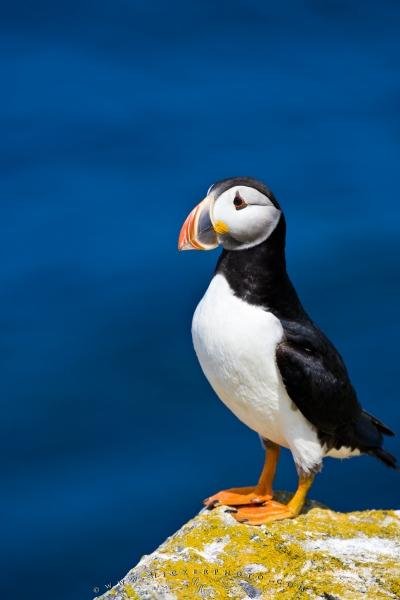Photo: Fratercula Arctica Common Puffin Picture Newfoundland
A species of seabird with several nicknames, the Common (Atlantic) Puffin is also known by its scientific name of Fratercula arctica. The Common puffin is found on the Atlantic coasts of Europe, Iceland, and North America such as in Newfoundland.
A member of the auk family, Atlantic (or common) puffins are a pelagic seabird also known by its scientific name of Fratercula arctica. It is also known as sea parrot or clown of the ocean.
A cute looking bird, the common puffin can be identified by their huge bright red, yellow, and blue-black beak which of course dominates its face. Their plumage is shiny black on their backs and the top of their wings with a stripe of black continuing up and over the top of their head to connect with the beak - there is also black plumage under their beak which creates the impression they are wearing a cloak. The majority of their face is grey-white and their bellies are white. There's a small amount of grey-white on the under-wing also. Their brilliant orange legs and webbed feet act as rudders while they dive for food. ... continue below the picture...
Fratercula Arctica Common Puffin Picture Newfoundland

species found along the coast of Newfoundland.
Pictures from photo gallery "Wild Animal Pictures"
This picture is part of the photo album "Animal Pictures" - there are more beautiful images waiting for you.
Related stock photo galleries, pictures & travel ideas:
Fratercula Arctica Common Puffin Picture Newfoundland
Their powerful wings are used to propel them through the water when diving for food which consists of several small fish such as herrings, shellfish, sprats, sand eels, and zooplankton.
Although the conservation status of common puffins is of least concern, they were hunted to the point that their numbers were noticeably reduced during the nineteenth century. In some areas the numbers are still greatly reduced however in others they are increasing in number.
Atlantic Puffins, Fratercula arctica, nesting on Bird Island just off shore from Cape Bonavista Lighthouse, Bonavista Peninsula, Bonavista Bay, Discovery Trail, Newfoundland Labrador, Newfoundland, Canada.
Technical Information:
I photographed this photo with the digital SLR camera model Canon EOS-1Ds Mark II, aperture of f/8.0, exposure time of 1/500 sec. on ISO 100, as always I used a original Canon Lens, the focus lenght for this picture was 400mm.
A species of seabird with several nicknames, the Common (Atlantic) Puffin is also known by its scientific name of Fratercula arctica. The Common puffin is found on the Atlantic coasts of Europe, Iceland, and North America such as in Newfoundland.
